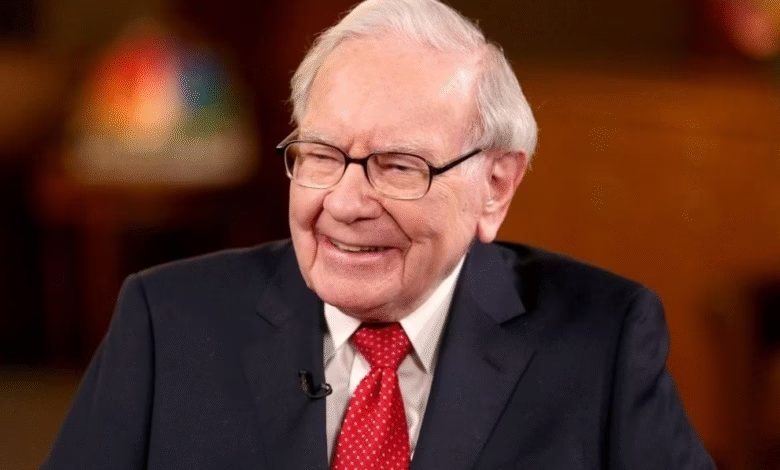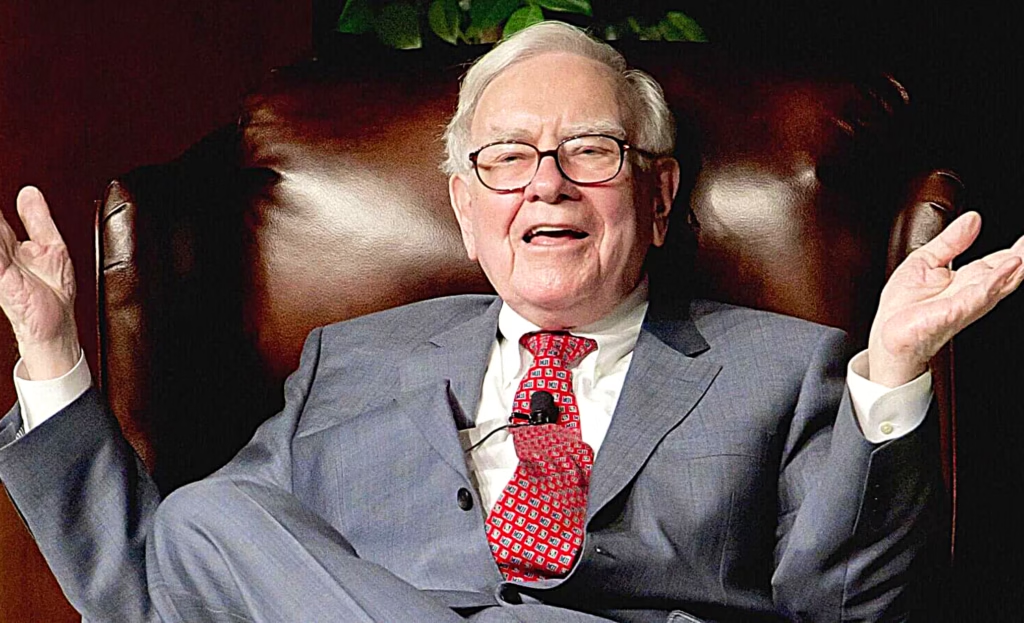Top 5 Lessons from Warren Buffett for New Investors
Discover Warren Buffett’s secrets to building long-term wealth

Warren Buffett, the enigmatic and wildly successful chairman of Berkshire Hathaway, is more than just an investor; he’s a financial sage whose wisdom has guided generations of investors toward sustainable wealth. For those new to the often-intimidating world of investing, the “Oracle of Omaha’s” principles offer a beacon of clarity and a roadmap to navigating the complexities of the market. This article will delve into the top five lessons from Warren Buffett, providing a comprehensive guide for new investors aimed at the North American market. We will unpack his core philosophies, translate them into actionable strategies, and equip you with the foundational knowledge to begin your investment journey with confidence.
Master the Market by Investing Within Your “Circle of Competence”

One of the most profound, yet deceptively simple, tenets of Warren Buffett’s investment philosophy is the concept of the “circle of competence.” In essence, Buffett advises investors to only put their money in businesses they can genuinely understand. This isn’t about having a PhD in every industry you invest in; rather, it’s about having a solid grasp of how a company makes money, its competitive advantages, and its long-term prospects.
For a new investor, the allure of a hot tech stock or a complex financial instrument can be tempting. However, chasing trends in industries you don’t comprehend is a recipe for disaster. Buffett himself has famously avoided many of the tech booms, not because he believed the companies would fail, but because they fell outside his circle of competence.
Expanding Your Circle, The Right Way:
The goal isn’t to have a small, restrictive circle but to be honest about its boundaries. A new investor can start by looking at industries they encounter in their daily lives. Do you work in a particular sector? Are you passionate about a specific hobby or consumer product? This firsthand knowledge can be the seed of your investment expertise.
Before investing in any company, ask yourself some fundamental questions:
- Can I explain this company’s business model to a 10-year-old? If the answer is no, it’s likely too complex for a sound investment at this stage.
- What is this company’s durable competitive advantage? What makes it stand out from its rivals? Is it a powerful brand, a unique technology, or a low-cost production process? Buffett refers to this as an “economic moat.”
- What are the long-term headwinds and tailwinds for this industry? Understanding the broader landscape is as crucial as understanding the individual company.
By adhering to the principle of the circle of competence, new investors can significantly reduce their risk. It shifts the focus from speculation to informed decision-making, a cornerstone of Buffett’s enduring success. It encourages a deep and meaningful engagement with your investments, transforming you from a passive observer into a knowledgeable business owner.
The Power of “Value Investing”: Buying Wonderful Companies at a Fair Price
At the heart of Warren Buffett’s strategy lies the philosophy of “value investing,” a concept he learned from his mentor, Benjamin Graham. The core idea is to buy stocks for less than their intrinsic value. However, Buffett’s approach to value investing has evolved. He famously quipped, “It’s far better to buy a wonderful company at a fair price than a fair company at a wonderful price.”
This distinction is crucial for new investors. It’s not just about finding cheap stocks; it’s about identifying high-quality businesses that are trading at a reasonable valuation. A “wonderful company” for Buffett is one with a strong and sustainable competitive advantage, a history of consistent earnings, and a competent and shareholder-friendly management team.
How New Investors Can Apply Value Investing:
For those just starting, the idea of calculating a company’s “intrinsic value” might seem daunting. However, the underlying principles can be simplified and applied through a focus on business fundamentals.
- Focus on the Business, Not the Stock Ticker: Before you look at a stock’s price, look at the company’s financial health. Key metrics to consider include:
- Revenue and Earnings Growth: Is the company consistently increasing its sales and profits?
- Profit Margins: Does the company have healthy profit margins compared to its competitors?
- Return on Equity (ROE): Is the company generating a good return for its shareholders?
- Debt Levels: Does the company have a manageable amount of debt?
- Develop a Margin of Safety: A key tenet of value investing is the “margin of safety.” This means buying a stock at a significant discount to your estimate of its intrinsic value. This buffer helps to protect you from errors in judgment and unforeseen market downturns. For new investors, this could mean looking for companies that are temporarily out of favor with the market but still possess strong underlying fundamentals.
- Patience is a Virtue: Value investing is not a get-rich-quick scheme. It requires patience and a long-term perspective. The market can be irrational in the short term, but over the long run, the true value of a great business will likely be recognized.
By adopting a value investor’s mindset, new investors can avoid the speculative frenzy that often leads to losses. It encourages a disciplined and analytical approach to stock selection, grounded in the tangible performance of the underlying business.
Embrace a “Long-Term Mindset”: Your Greatest Advantage in the Market

In a world of high-frequency trading and constant market news, Warren Buffett’s favorite holding period is “forever.” This long-term perspective is perhaps his most powerful and accessible lesson for new investors. The stock market is a device for transferring money from the impatient to the patient, and by adopting a long-term mindset, you position yourself on the right side of that transfer.
The power of a long-term approach lies in the magic of compounding. Compounding is the process where your investment returns themselves begin to generate their own returns. Over time, this can lead to exponential growth in your portfolio. However, the full benefits of compounding are only realized over extended periods.
Cultivating a Long-Term Investment Horizon:
For new investors, the temptation to react to short-term market fluctuations can be overwhelming. Here’s how to cultivate the discipline of a long-term investor:
- Invest, Don’t Speculate: Understand the difference between investing in a business for its long-term growth potential and speculating on short-term price movements. True investing is about owning a piece of a business and sharing in its future success.
- Ignore the Daily Noise: The financial media often thrives on sensationalism and short-term market commentary. Learn to filter out the noise and focus on the long-term fundamentals of your investments. A temporary drop in a stock’s price does not necessarily mean the underlying business is in trouble.
- Time in the Market, Not Timing the Market: One of the biggest mistakes new investors make is trying to “time the market” – buying at the absolute bottom and selling at the absolute top. This is a fool’s errand. A more effective strategy is to consistently invest over time and allow your investments to grow.
By embracing a long-term mindset, new investors can harness the power of compounding and ride out the inevitable ups and downs of the market. This patient approach reduces the stress of daily market volatility and aligns your investment strategy with the proven principles of one of the world’s greatest investors.
How to “Be Fearful When Others Are Greedy” and Vice Versa: Mastering Your Emotions
Warren Buffett’s famous quote, “Be fearful when others are greedy and greedy when others are fearful,” is a masterclass in behavioral finance. It underscores the importance of emotional discipline in investing. The stock market is often driven by the powerful emotions of fear and greed, leading to periods of irrational exuberance and panicked selling.
For new investors, these emotional tides can be particularly challenging to navigate. The fear of missing out (FOMO) during a bull market can lead to buying overvalued assets, while the panic during a market downturn can lead to selling at the worst possible time.
Developing Emotional Resilience as an Investor:
Mastering your emotions is a critical skill for long-term investment success. Here are some strategies to help you stay rational in an often-irrational market:
- Have a Plan and Stick to It: Before you invest a single dollar, create a clear investment plan. This should outline your financial goals, your risk tolerance, and your investment strategy. When market volatility strikes, your plan will serve as your anchor, helping you to make rational decisions based on your long-term objectives rather than short-term emotions.
- View Market Downturns as Opportunities: For a long-term investor, a market correction or a bear market can be a golden opportunity to buy wonderful companies at discounted prices. When others are panicking and selling, a disciplined investor can be a buyer, acquiring quality assets at a bargain.
- Automate Your Investments: A powerful way to take emotion out of the equation is to automate your investments. By setting up regular, automatic contributions to your investment accounts (a strategy known as dollar-cost averaging), you can build your portfolio over time without having to make emotional decisions about when to buy.
By learning to control your emotions and act as a contrarian, you can turn market volatility to your advantage. This disciplined approach is a hallmark of Warren Buffett’s investment style and a key differentiator between successful and unsuccessful investors.
Why “Rule No. 1: Never Lose Money” is the Foundation of Your Financial Future

Warren Buffett’s “Rule No. 1” is simple yet profound: “Never lose money.” And Rule No. 2? “Never forget Rule No. 1.” While it’s impossible to avoid all losses in investing, the underlying principle is about prioritizing the preservation of capital. For new investors, a significant early loss can be emotionally devastating and can derail their entire investment journey.
This rule is not about being overly conservative and avoiding all risk. Instead, it’s about making well-researched, intelligent investment decisions that minimize the risk of permanent capital loss. It’s a mindset that forces you to be diligent, patient, and focused on quality.
Practical Steps to Preserve Your Capital:
- Thorough Due Diligence: Before investing in any company, do your homework. Read the company’s annual reports, understand its financial statements, and familiarize yourself with its industry and competitors. The more you know, the less likely you are to make a costly mistake.
- Diversification is Key: Don’t put all your eggs in one basket. Diversifying your portfolio across different asset classes (stocks, bonds, real estate) and within asset classes (different industries and geographies) can help to mitigate risk. If one investment performs poorly, others may perform well, helping to balance out your overall returns.
- Avoid Leverage: Using borrowed money to invest (leverage) can amplify your gains, but it can also magnify your losses. For new investors, it’s a particularly risky strategy that can lead to catastrophic losses. Buffett has always been a proponent of investing with your own capital.
By making capital preservation a cornerstone of your investment philosophy, you build a solid foundation for long-term wealth creation. This disciplined approach will help you to avoid the common pitfalls that trap many new investors and set you on a path to a more secure financial future.
Your Journey to Becoming a Principled Investor
The wisdom of Warren Buffett is timeless. His principles of investing within your circle of competence, focusing on value, embracing a long-term mindset, mastering your emotions, and prioritizing capital preservation offer a powerful and proven framework for new investors. By internalizing these lessons, you can move beyond the noise and speculation of the market and begin to build a portfolio that is grounded in sound business principles. The path to successful investing is not a sprint; it’s a marathon. And with the enduring wisdom of the Oracle of Omaha as your guide, you are well-equipped to navigate the journey ahead and build a future of financial security and prosperity.





